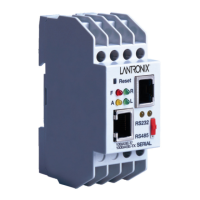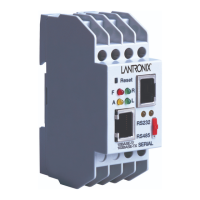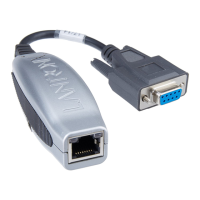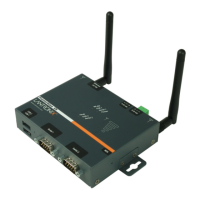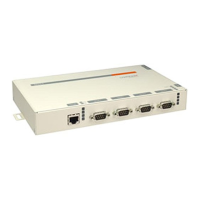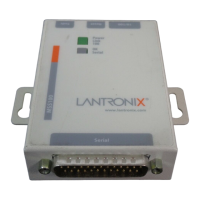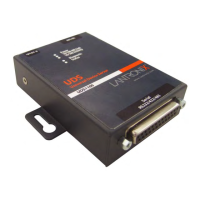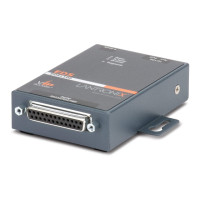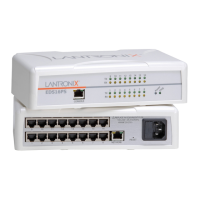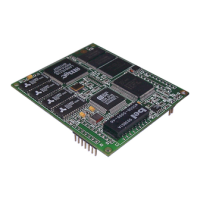Getting Started
3.2 Physically Connecting the Unit
The following diagram shows an XPort™ development kit properly connected.
RS232
10/100 Ethernet
+5
FP1
XPort Solder Pads
Select
Function
Selt Test
XPort Pin 6
to U2 CTS
XPort Pin 7
to U2 DCD
XPort Pin 8
to U2 DTR
XPort Pin 8
to U2 RTS
NO XPort
Pin 8 to U 2
Loop-back
Self Test
SW
on
off
ON
1
OFF
2
OFF
3
OFF
4
ON
4
OFF
5
ON
6
XPort Socket
SC1
LANTRONIX XPORT TEST BOARD
TP1 TP2
TP3 TP4
TDI
TCK
TMS
TDO
Chassis
Ground
Chassis
Ground
TP6 TP5
JP4
TP12
Reset
TP11
TP13
TP8
3.3V
TP9
Signal Ground
Configurable Port Interface
JP5
U1
D4 D6
D5
RS23 2
RXD TXD
Valid Activ e Ac tive
D7
D9
D8
CP1 CP2 CP3
PAD6
PAD7
PAD8
PLD
Control
PAD4
PAD3
U5
Slow
Timer
U4
SW2
SW1
PAD1
PAD2
PAD10
PAD9
Mode
16
RS232 T ransceiver
U2
P1
1
RS232 to D TE Device
TP7
Chassis
Ground
D2
Reset
XPort
Power
5VDC In
J1
XPort D -Out
XPort D -In
JP3
R31
Chassis Ground
Figure 3-1 - Evaluation Board Connected to Serial Device and Network
1. Connect a serial device to your unit.
2. Connect an Ethernet cable to the XPort™ Ethernet port.
3. Supply power to your unit using the power supply that was included in the packaging.
Note: The required input voltage for the XPort™ Evaluation Board is 5VDC (3 W
maximum).
4. Supply power to the serial device.
3.3 Methods of Assigning the IP Address
The unit's IP address must be configured before a network connection is available. You
have several options for assigning an IP to your unit, however, we recommend XPort™
Installer on page 3-5.
Method Description
DHCP A DHCP server automatically assigns the IP address and network
settings. See
DHCP on page 3-3.
XPort™
Installer
You manually assign the IP address using a PC attached to the network.
See
XPort™ Installer on page 3-5.
ARP and Telnet You manually assign the IP address and other network settings at a
command prompt using a UNIX or Windows-based system. Only one
person at a time can be logged into the configuration port (port 9999).
This eliminates the possibility of several people simultaneously
attempting to configure the unit. See ARP and Telnet on page 3-9.
AutoIP This automatic method is appropriate when you have a small group of
hosts rather than a large network. This method allows the hosts to
negotiate with each other and assign addresses, in effect creating a small
network. See AutoIP on page 3-4.
Serial Port
Login
You initially configure the unit through a serial connection.
See Serial Port Login on page 3-9.
3-2 XPort™ User Manual and Development Kit
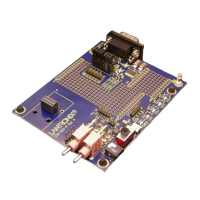
